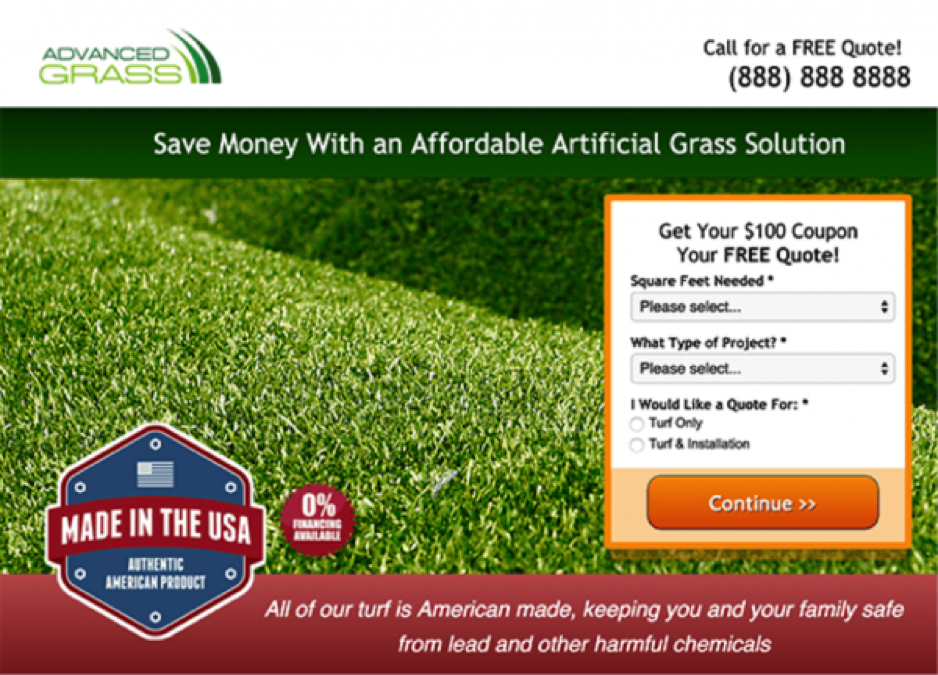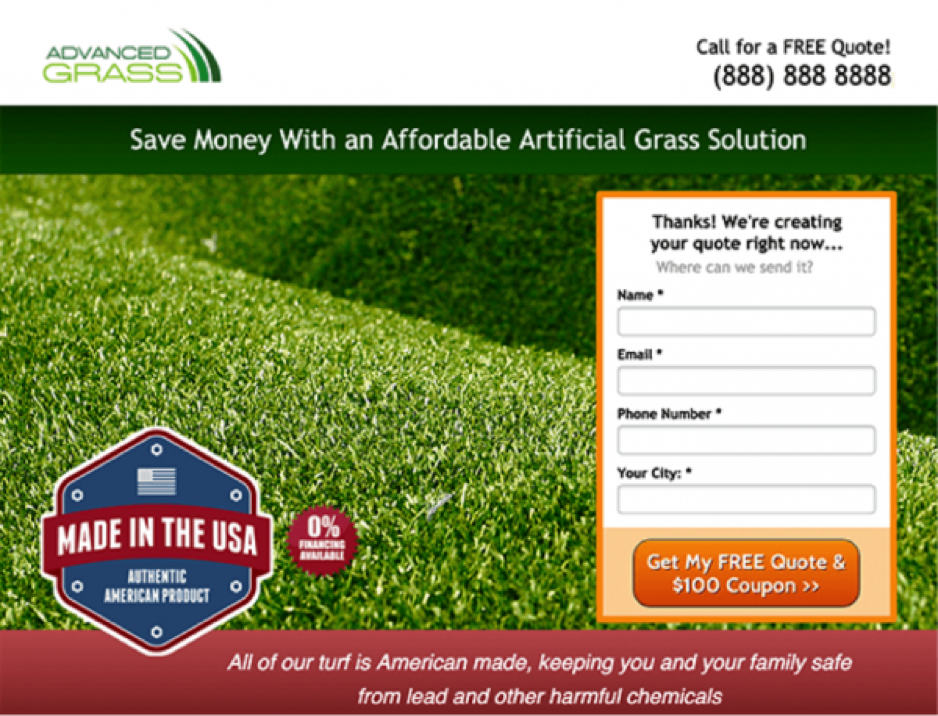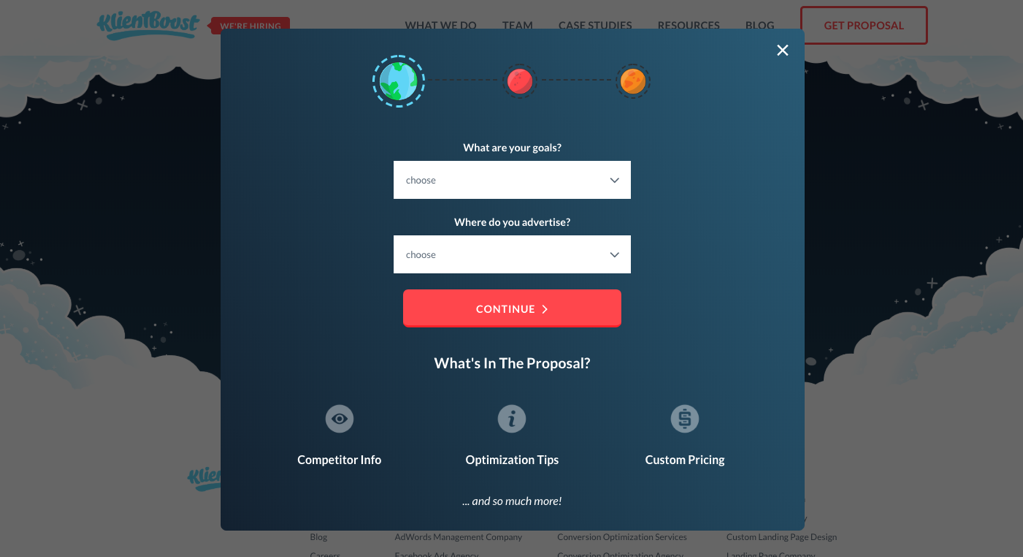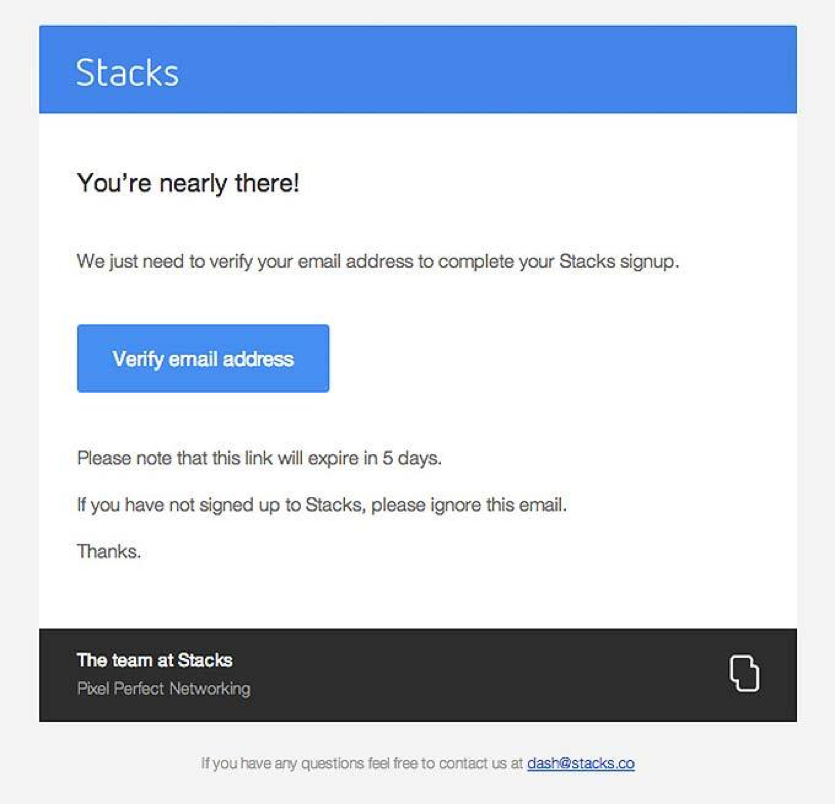Marketers spend a lot of time thinking about their buyers — who they are, what they need, and how to reach them.
But when a precious prospect actually clicks your ad, your landing page form hits them with the conversion equivalent of a cold wet towel:
*Name:
*Phone Number:
*Email:
*required field
What does this form really say? “I want your information, but I don’t want to know anything about you.”
Is that the message you’re trying to send? Even if you’ve optimized your landing page for engagement, your form needs to be a seamless extension of your sales message. A guide, if you will, that leaves a trail of breadcrumbs for users to follow and use as a basis for action.
The Breadcrumb Technique
The Breadcrumb Technique throws out the common CRO wisdom that paring down your form will inevitably improve conversions. We’ve found that starting with qualifying but anonymous questions can take your lead through your conversion process without resorting to a high-pressure sale.
This isn’t exactly a new tactic. In fact, it’s a modern application of a principle known as the Yes Ladder.
The Yes Ladder gained notoriety when researchers studying persuasion asked people in a small neighborhood to put “Drive Carefully” signs outside of their homes. When they presented a large sign, only 20 percent of people said yes.

To be fair, not everyone got the joke at first.
Then the researchers asked residents to put up a smaller sign first. Their “yes” rate? 76 percent.
The lesson?
Starting with a small request, or a “first ask,” increases your chances of getting a ‘yes’ to a bigger request later. Your “big ask” might be putting up a sign, closing a sale, or sharing personal information for a quote, but you have to work your way up to it if you’re going to convert effectively.
How Does User Psychology Factor In?
In Influence: The Psychology of Persuasion, Dr. Robert Cialdini states that making a choice usually leads people to take a path that validates that choice. Remaining consistent to their commitment creates an internal incentive to follow through.
Generating that “first yes” requires an irresistible reason to join in, or a barrier to entry so low that it’s almost invisible. But getting that initial Foot in the Door significantly raises your chances of succeeding with a larger request later on.

The ancient Romans took this idea to an alarming extreme.
It’s even easier to get your foot in the door when prospects know that answering your establishing questions will be necessary to get their solution.
For example, if you’re a specialty mechanic that only services BMWs and MINIs, your first step could be “Choose Your Make/Model” dropdown menus. Simple, right? But by sharing that innocent bit of info, your prospects are already starting an interaction that leads to another step — even if they don’t realize it.
How Does the Breadcrumb Technique Work?
Your landing page form shouldn’t be a “name/phone/email” skeleton, but it shouldn’t be a long, intimidating monolith either.
The successful third way is a multi-step form that starts with simple questions before the big ask. This introductory action reduces psychological friction and lets visitors remain anonymous even as they start the lead qualification process.
All it takes is the right first ask — even something innocuous like the “make/model” question above can hook a prospect by inciting action. And once that relationship begins, you can build trust and guide your prospect forward.
7 Ways the Breadcrumb Technique Boosts Conversions
Applying the Breadcrumb Technique means rethinking just about everything on your landing page form, from text, to the buttons, to the images, to… well, that’s most of it, to be honest. But these changes can make a significant difference in the success of your forms, as you’ll see below.
1. Reorders Form Fields
If you’ve learned anything by now, it’s that going for the big win too soon can cost you leads that you might have otherwise converted.
To that end, sometimes a simple restructuring of your form can make all the difference. Move your least threatening fields to the beginning and contact information fields to the end, and now users are climbing your ladder instead of hitting a wall.
Turf supplier Advanced Grass took this lesson to heart by splitting their existing quote form into two steps. In this example, the two anonymous questions and “Continue” call to action don’t require any upfront commitment, or even typing:

Just clicks for me, please.
The heavy lifting doesn’t appear until the second stage, where personal information is necessary. But notice the subtle difference — the user is finishing a transaction now, rather than starting one:

Step two: where the magic happens.
With these adjustments, Advanced Grass increased their conversion rate by 214%. That’s a lot of green! (Sorry, couldn’t help myself…)
2. Reduces Unqualified Leads
Another benefit of the Breadcrumb Technique isn’t psychological; it’s practical. Asking identifying questions at the outset can weed out users who don’t know enough about their issue to have a useful conversation yet.
In other words, visitors who know the answers to your initial questions and take the time to fill out your form are much more likely to be qualified leads.
3. Increases On-Page Engagement
By segmenting your landing page form, you aren’t just creating new tracking opportunities. Multi-step forms also create more room for design variations and supplemental visual cues for your user.
We pointed out the dropdown boxes in the first Advanced Grass image above, but the possibilities go much further. Some multi-step forms include a visual indicator of a user’s progress through the process, like the three globes in the signup form here:

Icons and text customized for for each step also add a more personal touch.
Like your form questions, these enhancements should be encouraging and focused on the benefits of your offer.
4. Removes Unnecessary Questions
Yes, we started out by saying it’s a bad idea to remove questions from your form. But we were referring to useful questions (hopefully that was clear).
Remember, your form questions are meant to be breadcrumbs that create trust and provide guidance, not create new pain points. Qualifying questions relevant to the lead’s problem do that.
Making the fax number a required field? Not so much.
It’s time to mercilessly interrogate each question on your existing forms. Does sales need the information? Does it guide the lead further down your conversion path? If the answer to both is ‘no,’ don’t think twice. Flush it.
5. Promotes Micro-Conversions
Micro-conversions are all the small actions that your user takes before your big ask.
In addition to the benefits we’ve already covered, these questions build trust while preserving anonymity until the very end, which helps to show that you value the user’s information and take their privacy seriously.

The only reliable way to track pre-internet micro-conversions.
Micro-conversions can also help you better understand where your prospect is in the sales cycle and address them accordingly.
6. Personalize & Adjust CTAs at Every Stage
Using the Breadcrumb Technique to segment (some might say “crumble”) your form creates new opportunities for testing.
The simplest way to set up your multi-step form is for each CTA to link to a new landing page containing the next stage of your form. Not only does this create a more seamless user experience, but now you can track conversion rates at each individual interaction.
Your PPC agency can adjust call to action text, dropdowns vs. open form fields, and make other changes at each step. By creating a more personalized customer interaction within the form ‘experience’, you can continue to build on the relationship you established when you first stuck your foot in the door. You’ll also have more chances to encourage the user to complete the process.
7. Double Opt-In
Double opt-ins are especially useful when your form is converting but users aren’t engaging in subsequent steps. Asking a lead to opt-in again after they’ve already shared their information confirms that they really do want what you’re offering.
While it might feel awkward to backtrack and ask for a recommitment so quickly, most people don’t mind opting in a second time. Sending an automated confirmation or verification email makes it easy for most users, and it can be a great way to increase the engagement of the leads who actually convert.

Something like this should do the trick.
Bonus: Test, Test, Test
The Breadcrumb Technique is an excellent tactic for boosting your conversions, but you shouldn’t stop there.
Form optimization is just one element of Conversion Rate Optimization, in which your agency tracks everything related to campaign goals and performance.
That data can be used to make adjustments to your funnel at other stages, compounding the growth from your multi-step landing page form.
Conclusion
Getting in your buyer’s head is important, but it’s just as important to remember that your buyers are people, not just data points and demographics.
Introducing the Breadcrumb Technique can help you use your landing page form to reach your leads as people — by starting a conversation, building trust, respecting the value of their privacy, and guiding them forward.
Even if you’re on a no-carb diet, you have to admit — that’s some pretty good bread.
Image Credits
Feature Image: Unsplash / Austin Ban
Image 1: via eBay
Image 2: via Wikimedia
Image 3-4: via ConversionXL
Image 5: via Klientboost
Image 6: via Laser Time Podcast
Image 7: via Instapage



